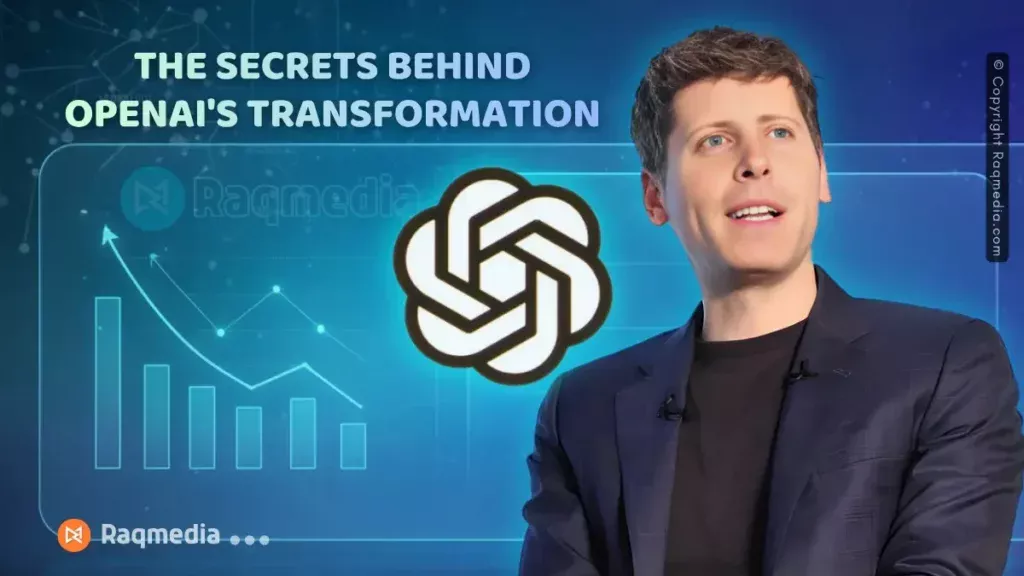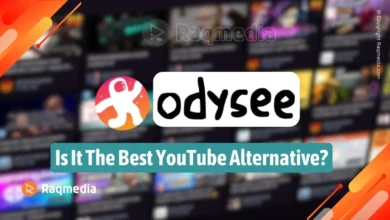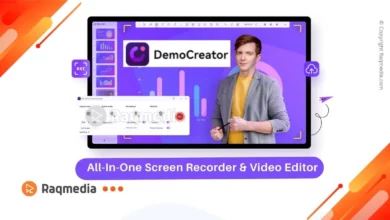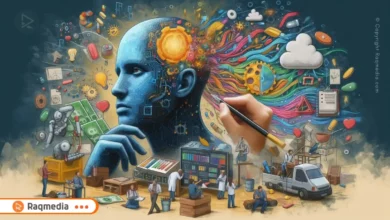In a world where artificial intelligence is reshaping industries, redefining human interaction, and sparking ethical debates, few stories are as intriguing as that of OpenAI. Founded with a mission to ensure that artificial general intelligence benefits all of humanity, OpenAI began as an idealistic nonprofit, fueled by a vision of harnessing technology for good. However, as the landscape of AI evolved, so too did OpenAI’s trajectory, transforming into a powerful player in the tech industry.
OpenAI Inside Story: From Idealistic Nonprofit to AI Powerhouse And Why It Matters
This blog post delves into the unlikely evolution of OpenAI, exploring its journey from a humble nonprofit to a key leader in AI innovation, and why this transformation holds significant implications for our future. Join us as we uncover the challenges, milestones, and moral considerations that have shaped OpenAI's path and what it means for the ongoing dialogue about the responsible use of artificial intelligence.
The Question That Shaped an AI Giant
“You have an incredible amount of power, why should we trust you?”
This single question, posed during a 2016 congressional hearing about another tech giant, encapsulates the fundamental tension at the heart of OpenAI's tumultuous journey. In less than a decade, this organization evolved from a small research collective with utopian ideals into one of the most influential and controversial companies in artificial intelligence. Their story isn't just corporate history, it's a window into the entire AI revolution, reflecting both its extraordinary potential and its profound ethical dilemmas.
The OpenAI narrative reveals how technological breakthroughs collide with human ambition, how idealism confronts commercial realities, and how quickly theoretical risks become practical concerns affecting billions. Understanding this journey is crucial because OpenAI's choices, from research directions to safety protocols to business models, are actively shaping the future of intelligence itself.
Founders & Origins: The Silicon Valley Dream Team Assembles
Sam Altman's Unconventional Rise
Long before becoming OpenAI's public face, Sam Altman was cultivating his unique approach to technology and impact. His first major venture, Loopt, pioneered location-based social networking years before similar features became mainstream. Though not a massive commercial success, Loopt demonstrated Altman's talent for identifying transformative trends.
His subsequent leadership at Y Combinator proved pivotal, positioning him at the epicenter of Silicon Valley's innovation ecosystem. Here, Altman refined his philosophy about technological acceleration while building relationships with nearly every significant player in tech. Unlike many founders driven purely by technical curiosity, Altman developed a reputation for understanding both technological potential and practical implementation, a combination that would later define OpenAI's approach.
Elon Musk's Existential Calculus
Meanwhile, Elon Musk was grappling with what he perceived as an existential threat. Having witnessed Google's growing dominance in artificial intelligence through DeepMind, Musk became increasingly vocal about the dangers of concentrated AI power. His famous assertion that AI represented “summoning the demon” reflected genuine concern about creating something humanity couldn't control.
Musk wasn't opposed to AI development itself, rather, he feared what might happen if it advanced within a single corporate structure without adequate safeguards. His solution was characteristically ambitious: create a counterweight to Google's influence that would prioritize safety over profit and distribute benefits widely rather than concentrating power.
The Founding Dinner: Idealism Meets Execution
In December 2015, these converging motivations culminated in what's now known in Silicon Valley lore as the “founding dinner.” Musk, Altman, and several other prominent researchers and investors gathered to discuss creating an AI research lab that would prioritize safety and broad benefit over shareholder returns.
The assembled team represented a rare combination of technical expertise, business acumen, and financial resources. Alongside Musk and Altman were:
- Greg Brockman, former CTO of Stripe, who brought engineering leadership
- Ilya Sutskever, a pioneering neural network researcher
- Wojciech Zaremba, an AI research scientist
- John Schulman, whose work would later prove crucial to reinforcement learning
This gathering wasn't merely about starting another research lab, it was an attempt to redirect the entire trajectory of artificial intelligence development.
Mission & Early Ideals: The Nonprofit Promise
Building AGI “For the Good of Humanity”
OpenAI's original mission statement reflected breathtaking ambition tempered with caution: to build safe artificial general intelligence (AGI) and ensure its benefits were distributed as widely as possible. The organization explicitly committed to using any influence it gained over AGI's development to uphold these principles.
The choice of AGI as the target, rather than narrower AI applications, signaled that OpenAI wasn't interested in incremental improvements. They were aiming for human-level artificial intelligence, widely considered the most significant technological milestone humanity might ever achieve.
The Meaning Behind “OpenAI”
The organization's name itself represented a core commitment. “Open” signaled their intention to publish most of their research, share patents with the world, and collaborate openly with other institutions. This stood in stark contrast to the secretive AI research happening within major tech companies.
Early documents explicitly stated that OpenAI would “freely collaborate with others” and anticipated “needing to work with institutions to effectively, responsibly and safely deploy AI and AGI systems.” This openness wasn't just philosophical, it was strategic, meant to prevent a race toward dangerous AI development behind closed doors.
Early Experiments & Challenges: The Rocky Road to Breakthroughs
Dota 2, Robot Hands, and Embracing Public Failure
OpenAI's early research projects reflected both ambition and a willingness to experiment publicly. Their Dota 2 playing bot demonstrated remarkable strategic能力, eventually defeating world champion players. While impressive, the project also revealed limitations, the AI required enormous computational resources and couldn't adapt beyond its specific training environment.
Similarly, their work on robot manipulation showed promise but progressed slowly. The physical world proved far more complex and unpredictable than simulated environments. These projects, while not immediately commercially viable, served as crucial learning experiences that shaped OpenAI's understanding of reinforcement learning and AI safety.
The Quiet Struggle and Near “AI Winter”
Behind the scenes, progress was slower than many founders had anticipated. By 2018, some researchers within OpenAI worried they might be approaching another “AI winter”—a period of reduced funding and interest similar to what had stalled AI development in previous decades.
The computational costs were staggering, with training runs sometimes costing millions of dollars in cloud computing with limited results. Internal debates intensified about research direction, with some arguing for more practical applications while others maintained focus on longer-term AGI goals.
Breakthroughs: The Transformer Revolution
Google's Accidental Gift to OpenAI
In 2017, Google researchers published “Attention Is All You Need,” introducing the transformer architecture. Initially, this breakthrough received moderate attention within AI circles, but researchers at OpenAI quickly recognized its potential. The transformer's ability to process sequences of data in parallel, rather than sequentially, offered dramatic improvements in both efficiency and capability.
This architectural innovation became the foundation for everything that followed. While Google initially focused on improving search and translation, OpenAI saw something broader, the potential for general-purpose language understanding that could form the basis for more advanced AI systems.
The GPT Series: From Narrow to General
OpenAI's Generative Pre-trained Transformer series began modestly. GPT-1, released in 2018, demonstrated promising language capabilities but remained clearly artificial in its responses. GPT-2, launched in 2019, represented a qualitative leap, its outputs were coherent enough that OpenAI initially hesitated to release the full model, concerned about potential misuse.
By the time GPT-3 arrived in 2020, the pattern was clear: each iteration wasn't just incrementally better but qualitatively different. The “emergent abilities” observed in larger models suggested that scaling might lead to capabilities beyond what researchers specifically programmed, a crucial step toward more general intelligence.
Pivot to Profit: Idealism Confronts Reality
Musk's Departure and the Funding Crisis
Elon Musk's 2018 departure from OpenAI's board reflected growing tensions about the organization's direction and his own conflicts of interest with Tesla's AI development. More practically, it created an immediate financial crisis—Musk had been one of the largest contributors to OpenAI's funding.

Facing astronomical computing costs and intense competition for AI talent, OpenAI leadership confronted a difficult choice: remain purely nonprofit and risk becoming irrelevant or adapt their structure to access the capital needed to compete. They chose the latter, creating a “capped profit” model that aimed to balance principles with practical necessities.
The Microsoft Partnership: Necessary Compromise?
The 2019 partnership with Microsoft, including a $1 billion investment, represented OpenAI's most controversial pivot. Critics argued the organization had abandoned its “open” principles by granting Microsoft exclusive commercial licensing rights. Supporters countered that the partnership provided essential resources while maintaining OpenAI's independence through its unique governance structure.
This transition from idealistic nonprofit to commercially-oriented organization reflected a broader pattern in technology: even the most principled initiatives often must compromise when confronting the realities of scaling cutting-edge research.
ChatGPT Goes Viral: Everything Changes
The Unexpected Public Phenomenon
When OpenAI released ChatGPT in November 2022, they anticipated interest from developers and tech enthusiasts. Nobody predicted it would become the fastest-growing consumer application in history, reaching 100 million monthly users in just two months.
The public response revealed something profound: while researchers had been focused on technical metrics, what users valued was the natural, conversational interface. ChatGPT made AI accessible to everyone, not just technical experts, unleashing creativity and productivity across countless domains.
Internal Concerns Amid External Celebration
Even as ChatGPT captivated users, OpenAI engineers grappled with familiar but intensified challenges. “Hallucinations”—the tendency to generate plausible but incorrect information, remained stubbornly present. Safety systems designed to prevent harmful outputs sometimes failed in unexpected ways.
The speed of adoption created new pressures. Every limitation or error became a public discussion, and the stakes for deployment decisions increased dramatically. What had been theoretical concerns about AI safety became immediate, practical challenges affecting millions of users.
Conflict & Power Struggles: The Boardroom Drama
Altman's Abrupt Firing and Stunning Return
In November 2023, OpenAI's board fired CEO Sam Altman, citing a lack of consistent candor in communications. The move shocked employees and investors alike, triggering an unprecedented staff revolt with nearly all employees threatening to resign unless Altman was reinstated.

The crisis revealed fundamental tensions within OpenAI's unusual governance structure. The nonprofit board, tasked with protecting the original mission, found itself at odds with the commercial arm's leadership and employees. Within days, Altman was reinstated with a new, more corporate-friendly board, a clear victory for the growth-oriented faction.
The Anthropic Exodus: Safety Versus Progress
Even before the boardroom drama, tensions between safety-focused and product-focused approaches had driven departures. In 2021, several key researchers, concerned that OpenAI was moving too quickly toward deployment, left to found Anthropic with an explicit focus on AI safety.
This splintering reflected a broader debate within the AI community: should development proceed cautiously, prioritizing thorough safety testing, or rapidly, believing that real-world deployment provides the best learning? OpenAI increasingly embraced the latter approach, while Anthropic positioned itself as the thoughtful, safety-first alternative.
Societal Disruption: AI's Real-World Impact
Creative Industries: Enhancement Versus Replacement
OpenAI's technologies have particularly transformed creative work, though not in the ways many predicted. Rather than simply replacing human creativity, tools like DALL-E and ChatGPT have become collaborative partners—augmenting human capabilities while raising complex questions about authorship and intellectual property.
Writers, artists, and musicians now grapple with fundamental questions: What aspects of their work remain uniquely human? How should AI-generated content be credited or compensated? These questions extend beyond individual creators to entire industries built around human creativity.
Challenging Google's Search Dominance
Perhaps the most significant disruption has been to internet search, long dominated by Google. ChatGPT's ability to provide direct answers, rather than links, represented a fundamentally different approach to information retrieval. Google's rushed release of Bard and subsequent AI integrations demonstrated how seriously they viewed the threat.
The economic implications extend far beyond search advertising. As AI systems become better at tasks ranging from coding to analysis to content creation, they threaten to reshape job markets and business models across countless sectors.
Global Competition & The Future: The New AI Arms Race
China's DeepSeek and Geopolitical Tensions
As OpenAI has grown, it has faced increasing international competition, particularly from Chinese companies like DeepSeek. This competition reflects broader technological and geopolitical rivalries, with nations recognizing AI's strategic importance.
Intellectual property disputes have intensified, with some U.S. companies accusing Chinese firms of using their research without proper attribution. These tensions complicate OpenAI's original vision of open collaboration, as national security concerns increasingly influence AI development.
OpenAI's Valuation and AGI's Horizon
Despite controversies, OpenAI's valuation has soared, reaching over $80 billion in early 2024. This reflects investor belief that the company remains at the forefront of AI development, potentially closer to AGI than any competitor.
The future path remains uncertain. Will OpenAI maintain its rapid product deployment approach, or will safety concerns prompt slower, more deliberate development? How will the organization balance its original mission with commercial pressures? The answers to these questions will shape not just OpenAI's future, but the trajectory of artificial intelligence itself.
Conclusion: The Unpredictable Future of Intelligence
OpenAI's story demonstrates how quickly technological revolutions can unfold and how difficult they are to predict or control. What began as a small research collective with utopian ideals has become a powerful corporation navigating complex technical, ethical and commercial challenges.
The fundamental question—”Why should we trust you with this power?”—remains as relevant as ever. As AI capabilities continue to advance, the stakes only increase. OpenAI's choices about safety, transparency, and responsibility will influence how this technology transforms society.
What seems certain is that the AI revolution is accelerating, not slowing. The coming years will likely bring capabilities we can barely imagine today, along with challenges we cannot yet foresee. How humanity navigates this transition may well be the defining story of our century.
Frequently Asked Questions
1. Why did OpenAI transition from nonprofit to for-profit?
OpenAI faced a fundamental choice: remain purely nonprofit with limited resources or access the capital needed to compete with well-funded corporate AI labs. The “capped profit” model represented a compromise, allowing investment while theoretically maintaining the organization's original mission through its unique governance structure.
2. What exactly is the difference between OpenAI and Anthropic?
While both companies develop advanced AI systems, they prioritize different values. OpenAI has emphasized rapid deployment and broad accessibility, believing real-world use provides crucial learning. Anthropic focuses more deliberately on AI safety and alignment research, prioritizing thorough testing before deployment.
3. How does ChatGPT actually work?
ChatGPT is based on a large language model trained on diverse text data. It learns statistical patterns in language and uses this knowledge to generate coherent responses. Unlike traditional programming, its capabilities emerge from the training process rather than being explicitly coded.
4. Why was Sam Altman briefly fired as CEO?
The board cited “lack of consistent candor” in his communications, though specific details remain unclear. The incident reflected deeper tensions between OpenAI's commercial ambitions and its safety-focused mission, a conflict that continues to shape the organization's direction.
5. What are AI “hallucinations” and why do they occur?
Hallucinations occur when AI systems generate plausible but incorrect or nonsensical information. They stem from the statistical nature of these systems, they're predicting likely word patterns rather than reasoning about truth. Reducing hallucinations remains a major focus of AI safety research.








